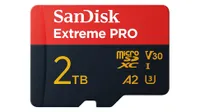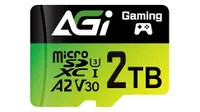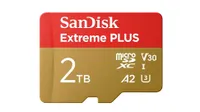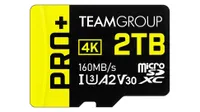Largest microSD card of 2025
Tiny cards, huge capacity - I compared the largest microSD cards you can get and the best prices for them
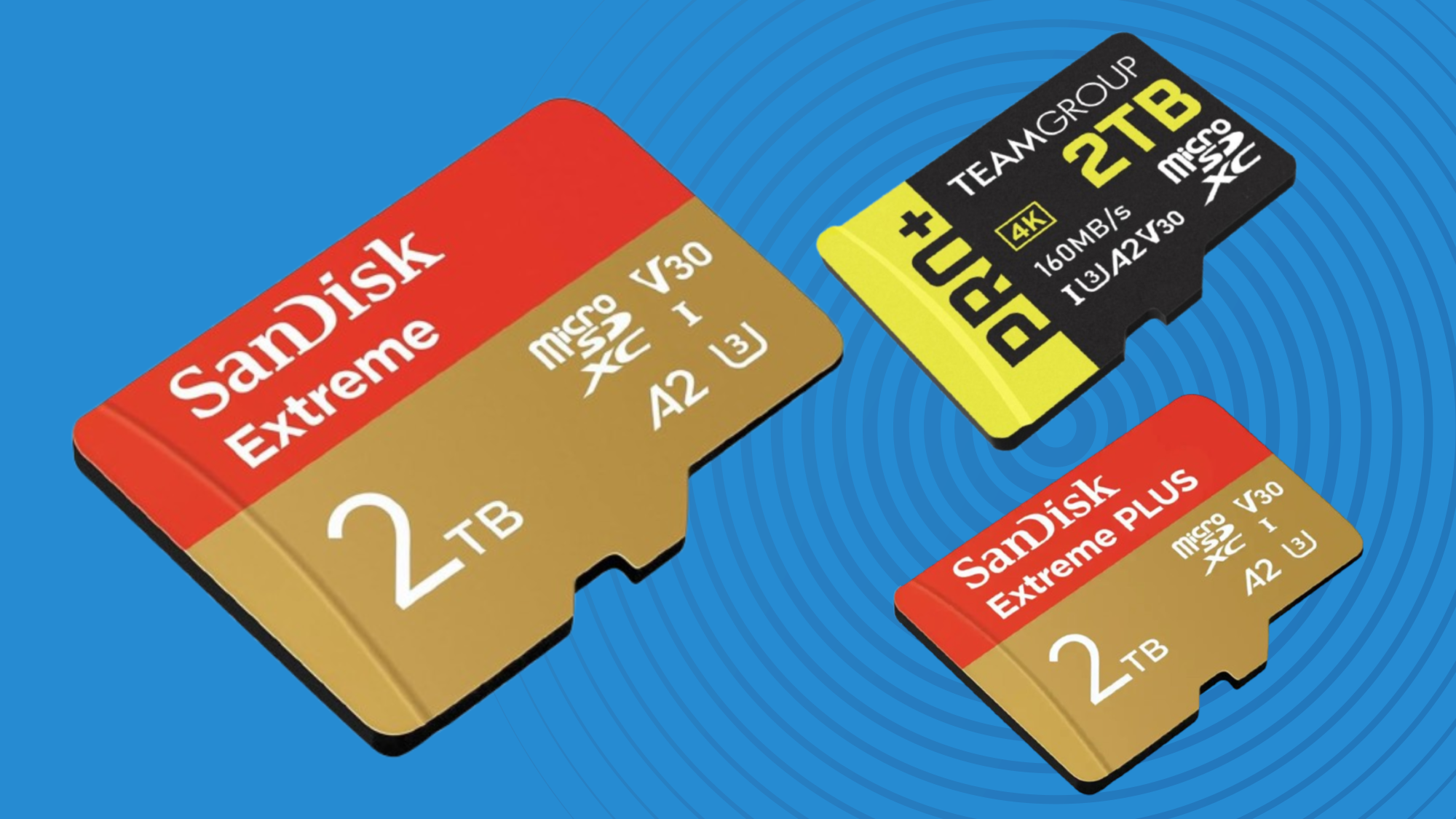
Upgrading to the largest microSD card your device supports is a great way to avoid running out of space, but there are other benefits too. You can store more apps, media, and files locally without needing to rely on cloud services.
Not all high-capacity cards are created equal, of course. The internet is full of too-good-to-be-true listings promising massive storage at rock-bottom prices. Many of these fall short, either underperforming or outright failing. That’s why it’s important to look beyond just capacity. A good microSD card also needs to be reliable and fast enough for your device's demands.
Read and write speeds matter, especially if you're using your card for demanding tasks like burst photography or recording high-resolution video. The best microSD card for a camera isn’t necessarily the same as the best one for a tablet or console.
In this guide, we highlight top-performing, high-capacity microSD cards from trusted brands. Our picks balance size, speed, and durability. The goal is simple: help you find a high capacity card that won’t let you down when it matters.
The largest microSD cards of 2025 in full
Why you can trust TechRadar
The first of three SanDisk cards in our round-up, the SanDisk Extreme microSDXC UHS-I offers read speeds up to 240MB/s and write speeds up to 140MB/s when used with QuickFlow-compatible reader.
It's one of the fastest UHS-I cards available, making it ideal for 5K and 4K UHD video capture. Rated A2, it handles app loading and multitasking with ease on Android devices and handheld gaming consoles.
It’s also built for reliability, with robust environmental testing and one-year file recovery support, so is a smart choice for demanding users. It's worth pointing out that while it's compatible with the Nintendo Switch, it isn't with the Switch 2.
T-Create Expert S.M.A.R.T. microSDXC stands out not just for its performance, but for its built-in health monitoring, a feature rarely seen in consumer cards.
T-Create is the creator-focused sub-brand of TeamGroup, known for producing high-performance memory solutions tailored to content creators, gamers, and professionals.
This card offers competitive speeds of up to 160MB/s read and 150MB/s write, and is rated V30, U3, and A2, making it more than capable of handling 4K video, demanding apps, and large file transfers.
What sets it apart is that proprietary S.M.A.R.T. technology, which monitors NAND wear and alerts users to potential failures before data loss occurs.
Combined with a lifetime warranty and solid environmental protections, it’s an excellent choice for creators who prioritize data integrity alongside speed, and don’t want to pay over the odds for it.
Alongside Amazon, it's also available at Newegg and Walmart for the same price.
The SanDisk Extreme PRO microSDXC UHS-I card improves on the already impressive Extreme model by pushing performance even further.
It achieves faster read speeds up to 250MB/s and write speeds up to 150MB/s, making it one of the fastest UHS-I cards available.
While both cards are A2-rated and ideal for 4K/5K recording, the PRO version also includes an extended two-year file recovery plan and broader compatibility with pro gear like DSLRs and portable recorders (via SD adapter). It's built for creators who demand top-tier speed and versatility.
AGI Supreme Pro TF138 microSDXC targets gamers and high-performance mobile users with an impressive balance of speed and versatility.
It boasts read speeds up to 170MB/s and write speeds up to 160MB/s, so is faster than the TeamGroup Pro+ and competitive with SanDisk's offerings, especially in write performance.
Rated UHS-I U3, V30, and A2, it's well-suited for 4K video, app-heavy environments, and fast game load times. Its broad compatibility with devices like smartphones, drones, and both generations of Nintendo Switch makes it a decent all-rounder for power users, although at $299 from Newegg it is the most expensive card featured here.
SanDisk Extreme PLUS microSDXC UHS-I card mirrors the top-tier performance of the Extreme PRO, offering identical read speeds up to 250MB/s and write speeds up to 150MB/s when paired with a compatible QuickFlow reader.
Like the PRO, it's A2-rated for fast app performance and supports smooth 5K and 4K UHD video recording. The key difference lies in positioning: while PRO targets professionals needing broader device compatibility (including DSLRs), the PLUS focuses on mobile users, gamers, and creators who want premium speed without the full pro-grade ecosystem.
It’s a powerful blend of speed and simplicity.
TeamGroup Pro+ microSDXC UHS-I offers solid performance aimed at creators who need reliable 4K recording without chasing peak speeds.
With read speeds up to 160MB/s and write speeds up to 110MB/s, it falls short of the SanDisk Extreme series but still meets U3 and V30 standards, making it perfectly suitable for 4K video and burst photography. At $183.99, it’s also the cheapest of the cards featured here.
Its wide device compatibility and dependable speed make it a strong value option for users who want high-capacity storage with consistent real-world performance.
How to choose the largest microSD card that's right for you
Storage capacity
Large-capacity microSD cards are important for a range of tasks. For example, if you're working with 4K video or burst photography, faster, high-capacity cards can also boost performance. Having extra storage means you won’t have to constantly delete or move files to make room. It’s especially useful for travel or remote work, where internet access might be limited. Larger cards also make it easier to keep everything in one place, simplifying backups and file organization.
Durability
Because many high-capacity cards are built with durability in mind, you often get added protection against water, shock, and extreme temperatures. If that's important - for example, using one in a drone - check your chosen card is protected against the elements.
Read/write speeds
It's always worth checking read/write speeds on any storage device - whether it's the largest microSD you can find or the best portable SSDs. The higher the numbers, the faster data transfer will be. This is especially important if you're recording high-res footage or performing other data-heavy workloads. Less so if you're using the memory card in your Switch or mobile devices.
You'll see a lot of cards in this round-up are listed as UHS, which means Ultra High Speed. Check the number that follows to see which is fastest. UHS-II is faster than UHS-I, and UHS-III is faster than both other options. On the card itself, check the number inside the 'U' logo. See a 1, and that means it's rated for a minimum of 10MB/s, while a 3 means it's capable of at least 30MB/s. For videographers, there's also a Video Speed Class (denoted by a 'V' logo), which ranges from V6 (6MB/s minimum) to V90 (90MB/s minimum).
Trusted brands
You'll find no end of memory cards online that promise much and deliver little. We recommend using microSD cards from trusted brands. In our experience during testing, these include Samsung, Kingston, SP/Silicon Power, Teamgroup, Sandisk, WD, PNY, Lexar, Inland, Gigastone, Patriot, Transcend, Amazon Basics, and MicroCenter. We wouldn’t trust any others.
Sign up to the TechRadar Pro newsletter to get all the top news, opinion, features and guidance your business needs to succeed!

Wayne Williams is a freelancer writing news for TechRadar Pro. He has been writing about computers, technology, and the web for 30 years. In that time he wrote for most of the UK’s PC magazines, and launched, edited and published a number of them too.


